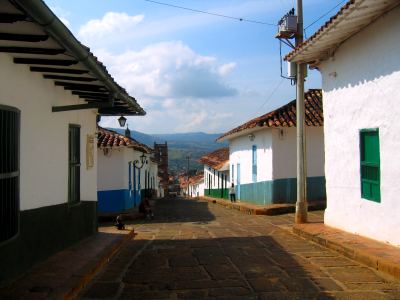Paragliding Paradise in Colombia
February 2006
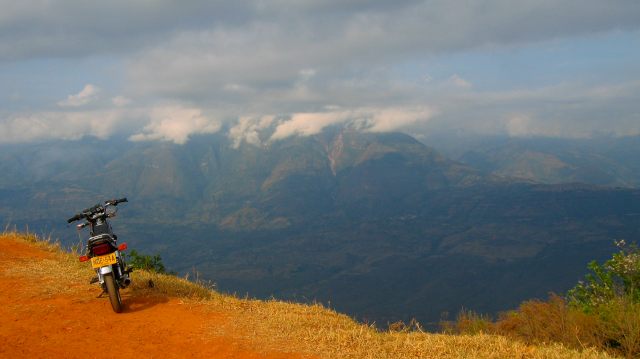
Barichara Launch
|
In 1702, a field worker on this mesa discovered a rock with an image of the Virgin Mary on it. In 1705, Don Francisco Pradilla y Ayerbe erected a church on the location of the miracle and the village was founded. Barichara means place to relax in the local Guane dialect. With an average temperature of 70° F, and cooling afternoon winds, it still is. Imagine an 18th Century Andalucian village transported to South America. Barichara was declared a National Monument in 1978 to protect its unique architecture and historical significance. It is a center for stonework and home to artists and artisans. Anywhere else, this town would be crawling with tourists. But here you have the place to yourself. You feel as if you have gone back in time to a slower pace and a more peaceful life. Explore the church, the museum, and the shops selling local art before relaxing in the town square with an ice cream. It is too windy to fly in the afternoon, anyway. |
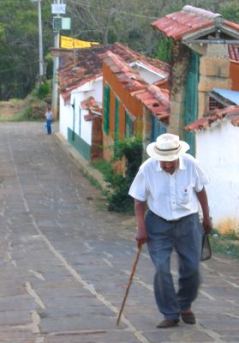

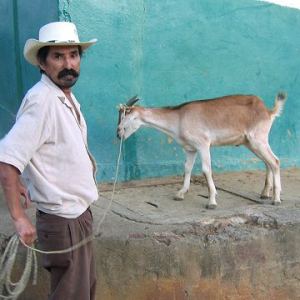
|
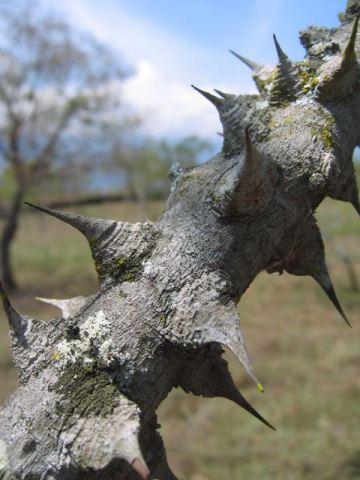
The launch is at 4200' MSL. The bailout LZ is 700 feet below the launch. The real LZ is on the other side of town. The theory is that you launch into a thermal, climb high, fly back over the village, and land in the LZ. That theory seemed to work for Richi and Russell, who both caught some lift and disappeared above us. Morgan and I were not quite as lucky. We both sank out into “Booga Booga Land”, Russell‘s description of the bailout area. My advice is to watch out for the trees. Scratching until the last minute in hope of a low save, I zoomed in low to the LZ and snagged this unfriendly looking thorny tree with my glider. I don't even want to think what would have happened if I had hit the tree with my body. An hour or so of disconnecting lines from the mallions and pulling them through the high branches and the glider was free. Another hour of checking the lines at 6 am the next morning and I was ready to fly Chicamocha Canyon from the South Launch near Chiflas. |
